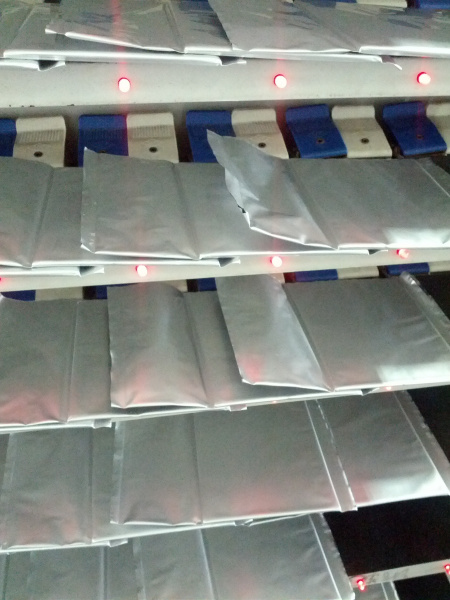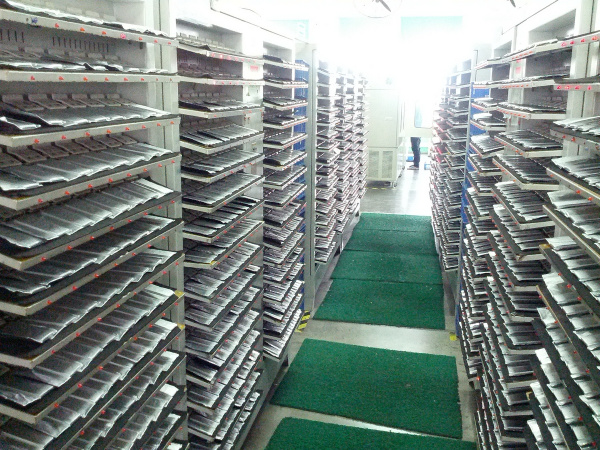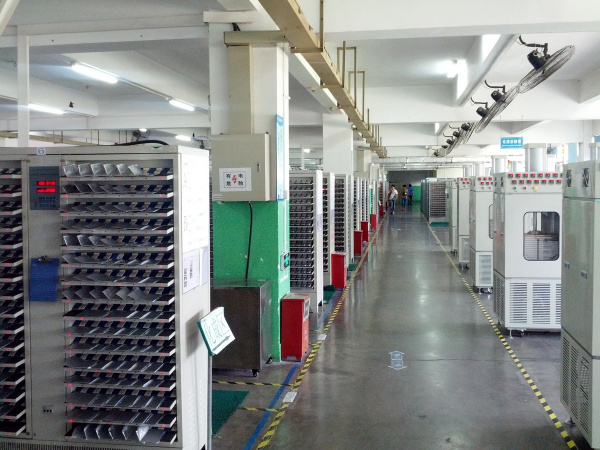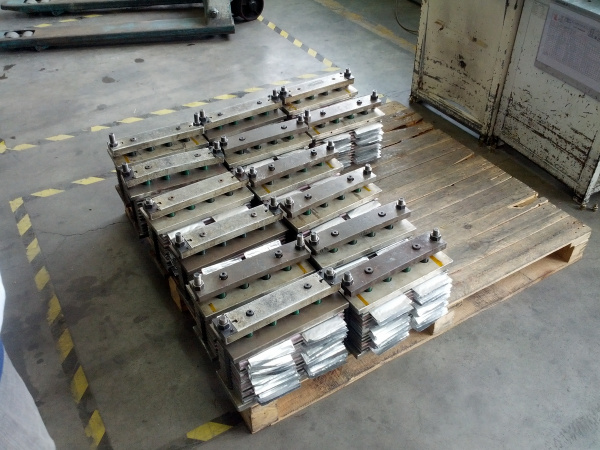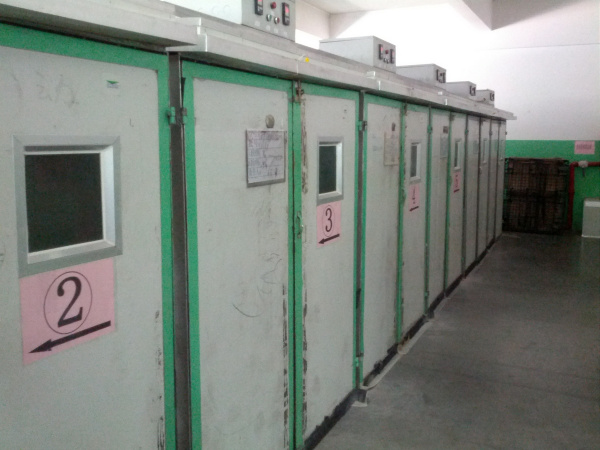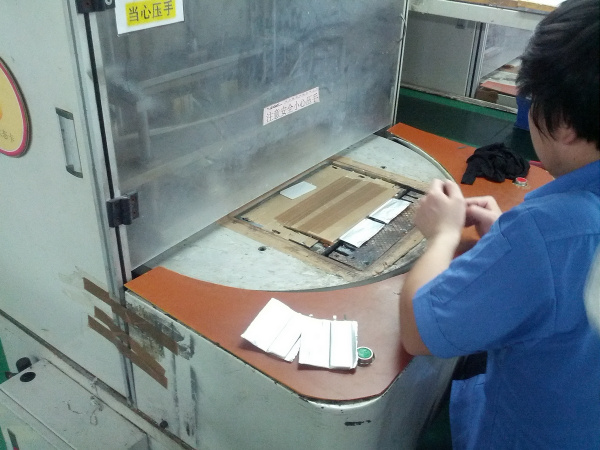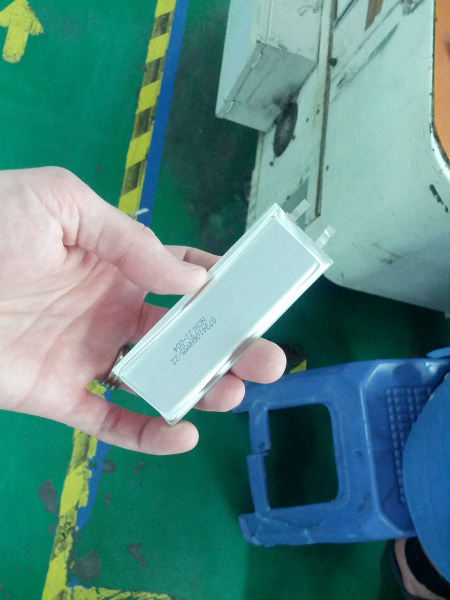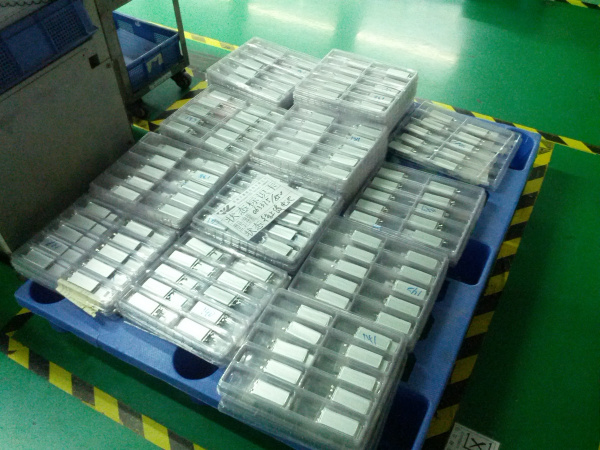How Lithium Polymer Batteries are Made
Charging
Once sealed, we can now call this thing a battery. This is the first charging cycle. You can see the plastic clips that clamp down on the exposed tabs. The small wing left on the battery is there to collect any electrolyte or gas that is pushed out during this first cycle.
Multiply by a lot of chargers.
And then fill an entire floor.
After their first charge is complete, the cells are strongly compressed. They told me "6 million pounds," but orders of magnitude often get mangled in translation. Let's call it a lot.
Air quickly degrades and causes problems with the battery chemistry. The heavy compression helps force out any remaining air from the cells.
I failed to get the exact amount of time or temperature, but the batteries bake compressed for a few hours.
The next step is to remove any excess electrolyte that has been forced out of the main cell and into the side pillow. If you've ever smelled a puffed or 'sweet' smelling battery, you know what this room smells like. Once the electrolyte is removed, the cell is trimmed.
At the end of all this, you have a battery. Technically, this is a single cell because the protection circuit and termination is still required.
Again, scale is important to remember. Every portable device we play with: tablets, cell phones, shavers, e-cigarettes, RC helicopers, etc. have a LiPo battery. Great power manufactures tens of thousands of cells a day.
